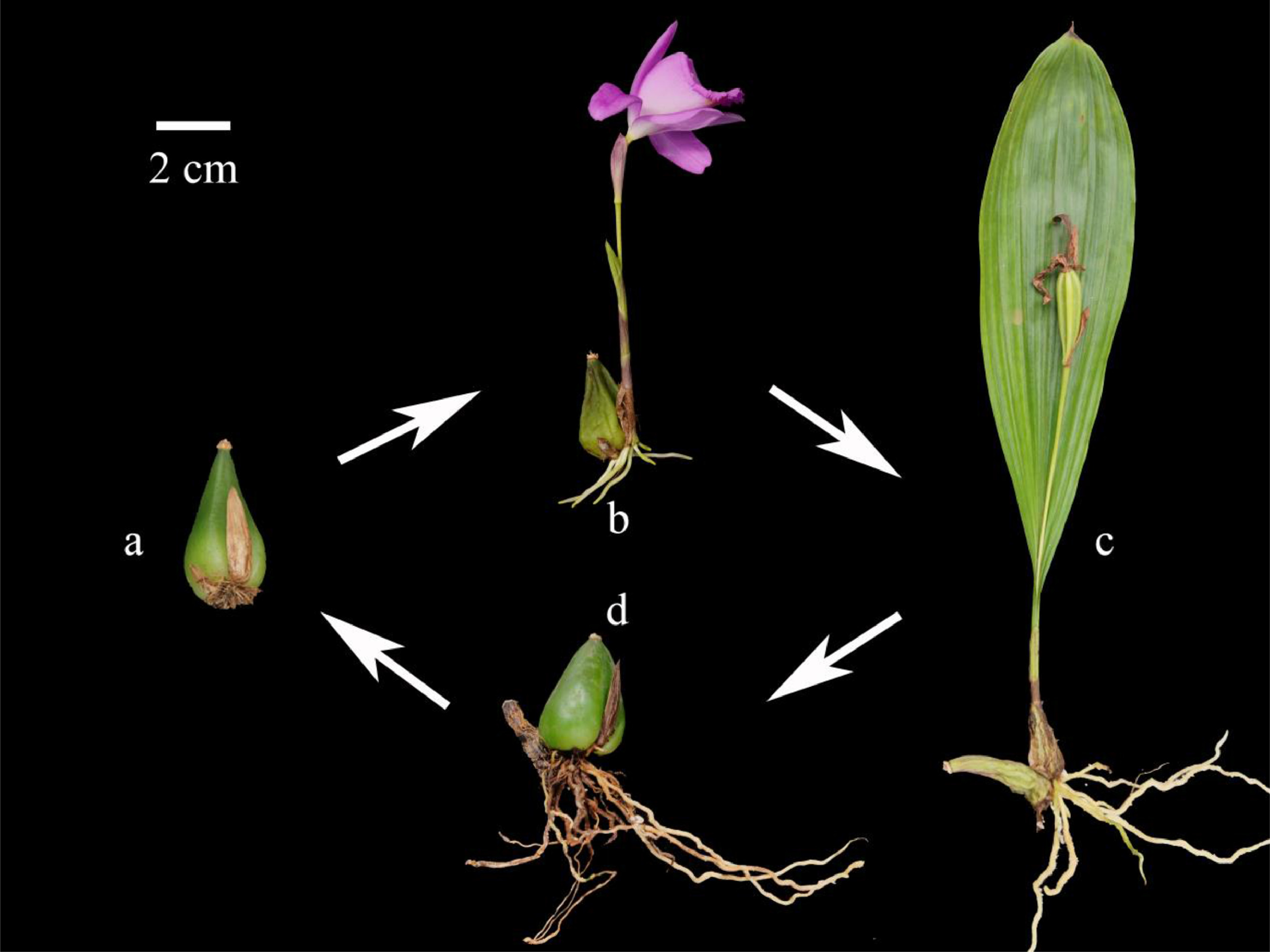Pseudobulbs, which are somewhat enlarged or thickened succulent stems, are common in epiphytic orchids. Nitrogen can be transported from old to young pseudobulbs and between leaves and pseudobulbs. Some previous studies have focused on the function of pseudobulbs as exchange center of orchids. However, quantitative studies of the nitrogen allocation in pseudobulbs are still lacking. Quantifying nitrogen allocation and resorption of pseudobulbs is important for understanding the survival and adaptation strategies of orchids.
In a study published in Scientia Horticulturae, researchers from Xishuangbanna Tropical Botanical Garden (XTBG) and Kunming Institute of Botany (KIB) quantified the nitrogen allocation and resorption in the epiphytic orchid Pleione aurita in relation to nitrogen supply. They found that both the old and newly produced pseudobulbs can act as a sink for exogenous nitrogen, but with much lower sink activity in the former.
The researchers investigated the physiological performance, biomass allocation and nitrogen resorption of P. aurita, a world-famous ornamental and important medicinal orchid plant, under three nitrogen levels. Using 15N, they compared the contributions of exogenous nitrogen and stored nitrogen, and the allocation to each organ.
They found that the leaf took up the largest proportion of both fertilizer and old pseudobulb-stored nitrogen. The fruit preferred to use pseudobulb-stored nitrogen regardless of exogenous nitrogen supply. The resorption of nitrogen in the leaf and pseudobulb was more efficient than other plant organs, but decreased with increasing nitrogen availability.
“Our results suggested an important role of the pseudobulb in the nitrogen economy of P. aurita, and the high dependence of the reproduction process on the pseudobulb-stored nitrogen rather than an exogenous supply," said FAN Zexin, a correspondence author of the study.
Contact
FAN Zexin Ph.D Principal Investigator
Key Laboratory of Tropical Forest Ecology, Xishuangbanna Tropical Botanical Garden, Chinese Academy of Sciences, Mengla, Yunnan 666303, China
E-mail: fanzexin@xtbg.org.cn

Development of Pleione aurita over a whole growing season. a, Dormant pseudobulb; b, flowering stage; c, full leaf expansion; and d, leaf shedding. (Image by ZHANG Wei)

